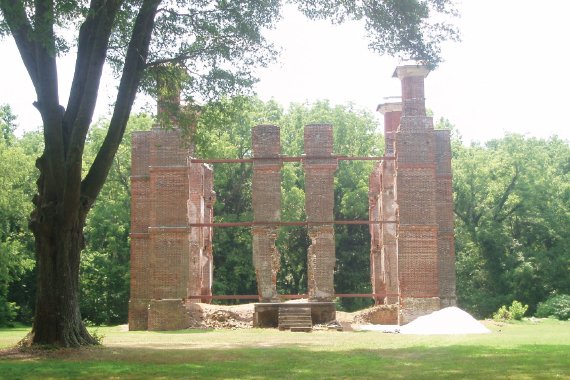Ghost Towns of Virginia
Northern Virginia has a population that grows exponentially every year, but there are areas in Virginia where the only thing left are the shells of towns and their histories that are ripe for exploration. –SR

Allison Stec Bell/Shutterstock.com 
Rosewell Plantation
Rosewell Plantation, once an example of Virginia wealth, was home to the Page family for more than 100 years.
The owner, John Page, who was peers with Thomas Jefferson at The College of William and Mary, eventually wrote a letter to Jefferson regarding the Declaration of Independence so poignant that he was quoted by George W. Bush more than two centuries later in his 2001 inaugural address.
Page went onto become the 13th Governor of Virginia. His wife, Margaret Lowether Page, was an early American poet who hosted literary salons at the mansion. The Rosewell Plantation’s vibrant facade was only matched by the elaborate balls that were celebrated inside through the 18th and 19th centuries.
The estate remained a towering and beautiful presence in Virginia until a fire tore through the mansion in 1916 and left only a shell. What remains now are only the magnificent ruins of the rich colonial history.
The substantial ruins are open for visitation Monday-Thursday and Saturday from 10 a.m. to 4 p.m. and Sunday from 1 to 4 p.m. / pentagonmemorial.org/explore/design-elements

Elko Tract
In 1942, the U.S. government constructed a decoy airfield outside of Richmond in hopes that should the Nazis attempt to bomb a base, nobody would be injured. The base was deactivated in 1945, and there were plans to turn Elko Tract into a mental health site for African-American children, but the funding eventually fell through and Elko Tract slowly became a “lost city.”
While There: Check out the pieces of city that are left behind. Find out if the “lost city” ever really was a nuclear testing facility or alien detainment location. 
Pocahontas
Pocahontas hasn’t been entirely abandoned, but much of it has. A booming coal town in the early 20th century, the town was ravaged when the mine shut down. The high school has shut down, and many of the historic 19th-century buildings now fall into ruin. The rows of street fronts that once boasted a prosperous coal mining town are now just faded facades.
While There: Wander around the decaying buildings and visit the coal mine Wednesdays through Sundays throughout the summer. 
Union Level
Union Level used to be a bustling stop in Mecklenburg County. In the 1800s it was along the horse and carriage line, and then later in the 1900s, it was along the rail line. Churches, storefronts and homes were all erected, but once the rail line left, so did all of the occupants. The buildings are standing but have been taken back by nature and are slowly falling to ruin.
While There: Walk along where the sidewalks used to be, take a picnic in the street, and snap photos inside some of the remaining stable buildings.
(August 2015)
